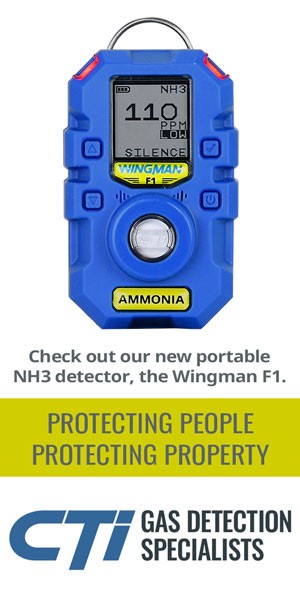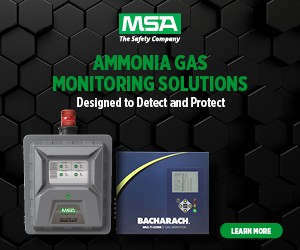EPA Continues Work to Implement AIM Act
By Lowell Randel, IIAR Government Relations Director

These meetings build on a series of actions that the EPA has taken in recent months. In October 2021, EPA published a Final Rule establishing an HFC allowance allocation and trading system to phase down HFCs. From 2022 to 2050, cumulative net benefits are estimated to be over $272 billion, and total emission reductions are projected to be the equivalent of 4.6 billion metric tons of CO2 or nearly equal to three years of U.S. power sector emissions at 2019 levels. HFC allowances for calendar year 2022 were issued Oct. 1, 2021.
Under the AIM Act authority, EPA may by rule restrict the use of HFCs in a sector or subsector in which the HFC is used. EPA has acknowledged that restricting HFC use in certain sectors or subsectors where there are alternatives could support smooth transition and the economy-wide HFC phasedown goals of the AIM Act. This would result in reducing HFC use and emissions while promoting U.S. innovation in the development of substitutes and alternative technologies. The AIM Act provides that a person or organization may petition EPA to promulgate a rule for the restriction on use of a HFC in a sector or subsector, such as refrigeration. Petitions submitted to EPA must be acted upon within 180 days, and if granted, EPA must complete a rulemaking within 2 years.
In 2021, EPA received a number of petitions to restrict HFCs in the refrigeration sector, including one from IIAR. IIAR’s petition, along with several others from industry and environmental groups, was granted. Granting petitions does not mean EPA will propose or finalize requirements identical to the petitioners’ request. However, by having a granted petition, IIAR is well-positioned to influence the process moving forward. EPA has indicated that it plans to address the granted petitions in a single rulemaking. Under the procedures established in the AIM Act, EPA is required to issue a Final Rule two years from granting a petition, which would be October 7, 2023.
In addition to restricting HFC use in various sectors, EPA is also establishing a system to track and allocate HFCs. As of January 1, 2022, allowances are needed to produce or import bulk HFCs (with limited exceptions). Producing HFCs requires expending both production and consumption allowances while importing HFCs requires expending consumption allowances. EPA has set the target of 40 percent reduction from baseline starting January 1, 2024.
The HFC Allowance Allocation and Tracking Program also has a robust enforcement and compliance system. The program requires advance reporting so EPA can monitor imports in real-time and flag suspect shipments. EPA also requires electronic tracking for movement of HFCs through commerce (QR codes) starting January 2025. Over the next 5 years, the program will phase in use of only refillable cylinders and will prohibit single-use disposable cylinders. The transition will be a two-step process. First, starting in July 2025, new disposable cylinders will be eliminated. Then, starting in Jan 2027, industry will be expected to retire those that remain in the market. The system will require recordkeeping and reporting, labeling, auditing, and data transparency. EPA will have the authority to use administrative enforcement actions such as revoking or retiring allowances, as well as potential civil and criminal enforcement actions.
EPA also provided notice that on March 31, 2022, the Agency issued hydrofluorocarbon allowances to applicants that met the applicable criteria from the set-aside pool established in EPA’s 2021 final rule titled Phasedown of Hydrofluorocarbons: Establishing the Allowance Allocation and Trading Program under the American Innovation and Manufacturing Act. In accordance with this final rule, the agency redistributed allowances remaining in the set aside pool to entities that received general pool production and consumption allowances on October 1, 2021. Both the set-aside allocation and the general pool reallocation were announced on the Agency’s website on March 31, 2022, and entities were notified either by letter or electronic mail of the allocation decisions. The agency also provided notice to certain companies on March 31, 2022, that the agency intends to retire an identified set of those companies’ allowances in accordance with the administrative consequences provisions established in the final rule.
The AIM Act and resulting phasedown of HFCs provides an important opportunity to promote the benefits of natural refrigerants. IIAR will continue to work closely with EPA and other partners as implementation moves forward to ensure that the forthcoming policies and rulemakings are well informed by the natural refrigeration industry.











